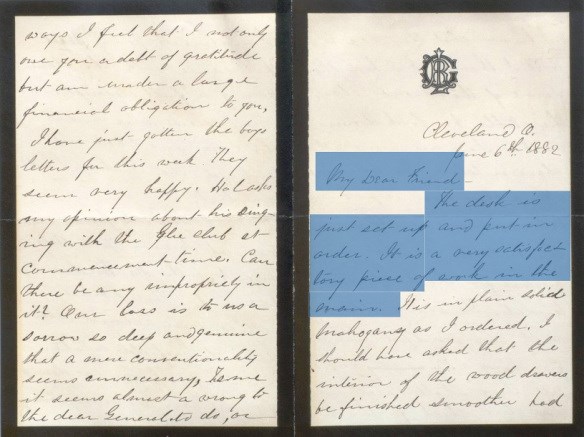Last updated: January 10, 2021
Article
The Joy of Historical Sleuthing

NPS
As a Park Ranger at James A. Garfield National Historic Site, every now and then I experience the joy of such discovery. These moments occur whenever I “go home” as the Easter, Thanksgiving, and Christmas holidays approach. Washington D.C. is just a stone’s throw from my Baltimore roots. I am filled with anticipation when I board the Metro for my visit to the Library of Congress.
I was most recently there on April 5. My mission was to locate a document relating to the “Wooton Secretary” in the Memorial Library at the Garfield home. It was a letter from the manufacturer to a representative for Mrs. Garfield, composed in 1882.
Before this visit, not much was known about the desk. When was it made? Was President Garfield alive at the time? Was it a gift to him?Was it a memorial piece? Who was responsible for having it made?
Still, on April 5, those questions were not uppermost in my mind. I wanted to see the letter I had originally seen for other reasons. I never discovered that letter, but what I found was more exciting.

NPS
On January 30, she questioned the expense involved. “I do not think I ought to pay more than $750 for a desk. Still, as I said before, this must be in my house a piece of furniture, and not a mere convenience. I therefore want it good enough for a handsome library if I ever get one.” (She got her handsome library.)
Lucretia Garfield’s February 13 letter indicates that she changed her mind about the wood to be used. It would not be ebonized. Instead, it was to be made with “the best dark red mahogany.” (emphasis added)
Finally, on June 6, 1882, the desk was in her home on Prospect Street in Cleveland: “The desk is just set up and put in order. It is a very satisfactory piece of work in the main.” However, it did not arrive with all the features she desired. “I thought I asked that some of the drawers above the table be lock drawers. As it is there are none either above or below.”
Yet, she was, overall, pleased with the desk: “The writing table is really very beautiful and all the finishing very perfect…”
Written by Alan Gephardt, Park Ranger, James A. Garfield National Historic Site, July 2018 for the Garfield Observer.
